Art Collectors
What I Buy and Why: Miwa Taguchi on Evolving Her Father’s Art Collection and Getting in Early on Yoshitomo Nara
We caught up with the Japanese collector ahead of the debut of Tokyo Gendai.
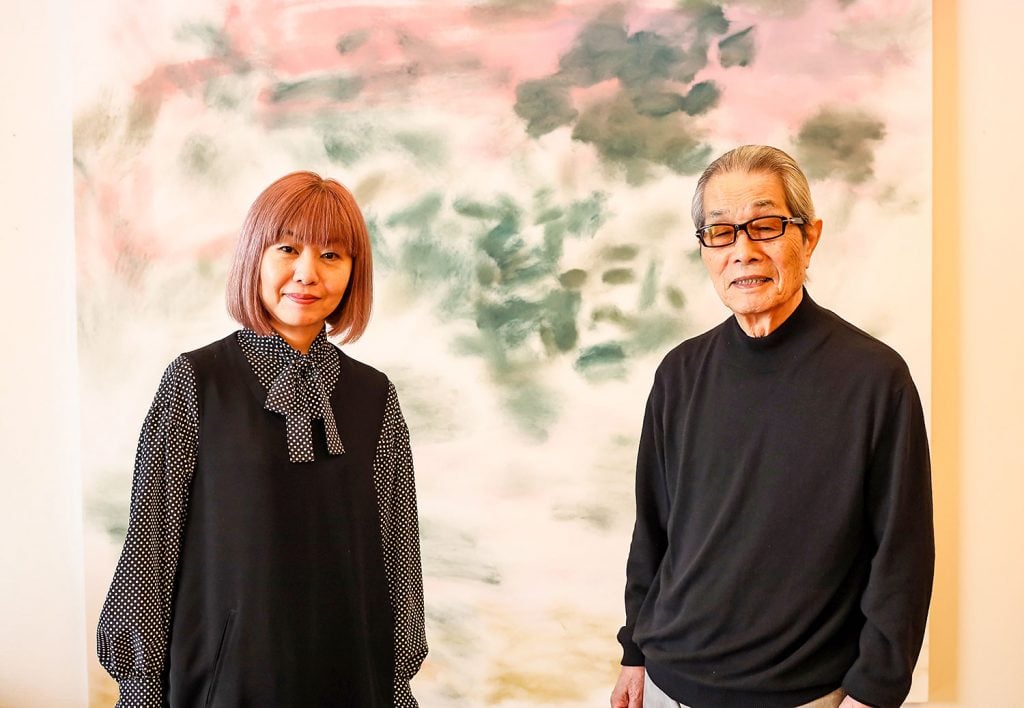
We caught up with the Japanese collector ahead of the debut of Tokyo Gendai.

Naomi Rea

A new international art fair, Tokyo Gendai, debuts in Japan this week, which hopes to draw out a mix of local and international collectors to the port city of Yokohama. The event presents an exciting new opportunity for a homegrown Japanese cohort of art lovers, such as Miwa Taguchi, to make connections with global audiences and build new cultural bridges through art.
The Taguchi Art Collection includes work by the stars of Japanese art today such as Yayoi Kusama, Yoshitomo Nara, and Hiroshi Sugimoto, as well as some of the most coveted names on the international circuit, such as Rashid Johnson, Maurizio Cattelan, and Matthew Barney.
The collection began with Miwa’s father, Hiroshi Taguchi, when he was president of the manufacturing company MISUMI. He began building a corporate collection in 1996 after becoming enamored with Keith Haring’s street art in the 1980s. After retiring in 2002, he transferred that passion to a personal collection that has since grown to include some 650 artworks and expanded in focus from American Pop art to include a wide range of global and Japanese artists, with a focus on the emerging.
Miwa Taguchi has been managing the collection for a decade, including developing an itinerant program for their many large-scale installations, as she oversees the collection’s public display at museums around Japan, and tours the works to high schools across the country. Her own gateway to collecting began with her passion for music; a hobbyist viola player, she was drawn to works related to classical music, such as those by Samson Young or Chikako Yamashiro, and since has found connections with pieces engaging with minority experiences and structures of power—subject matter relating to her past career in social work.
We caught up with Taguchi about how her collecting tastes differ from her father’s, the artworks that got away, and the artists she’s most eager to introduce to a Japanese audience.
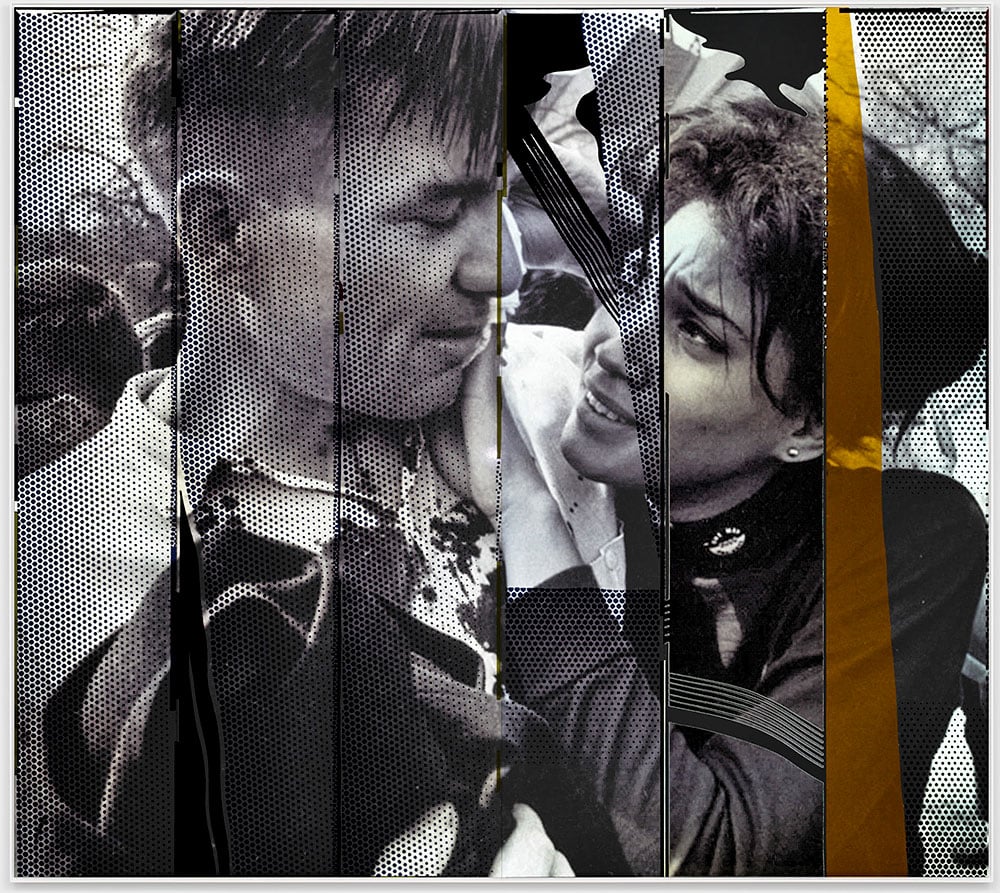
Hank Willis Thomas, Mirror #6 (2022). Courtesy of Miwa Taguchi.
What was your first purchase?
I purchased a work by Raqib Shaw at Art Basel Miami 2014, the first overseas art fair my father entrusted me with. I had been interested in Shaw’s work for a long time; however, the prices had already begun to increase that I ended up going way over my budget for my first purchase.
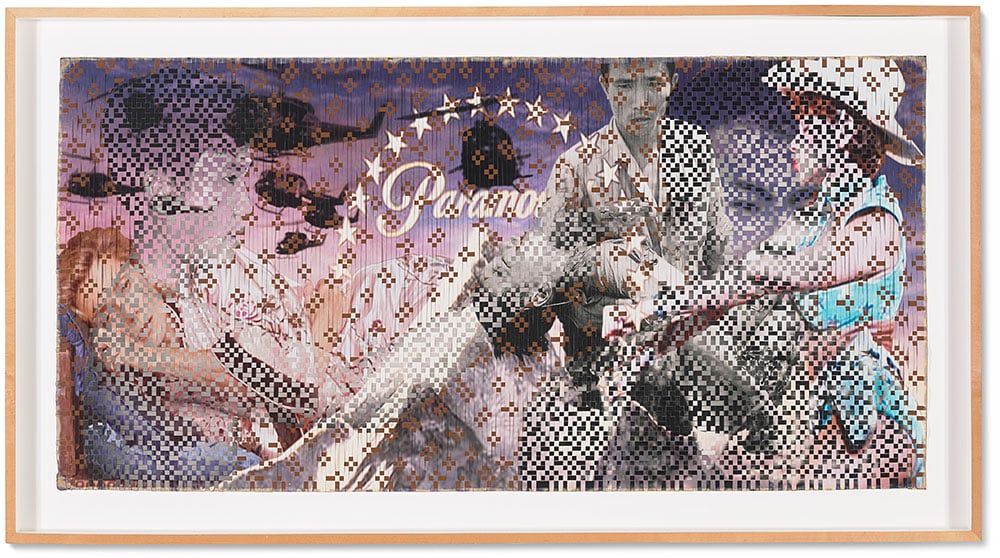
Dinh Q. Lê, Paramount (2003). Courtesy of Miwa Taguchi.
Please tell us about your recent purchases.
Some of my recent purchases include but are not limited to Dinh Q. Lê’s photo-weaving series, William Kentridge’s video work, Hank Willis Thomas’s retro-reflective series, Mika Tajima’s negative entropy series, Yinka Shonibare’s patchwork work, Lu Yang’s video work, Yukinori Yanagi’s Ant Farm series, and young Taiwanese artist Chang Li-Ren’s video works.
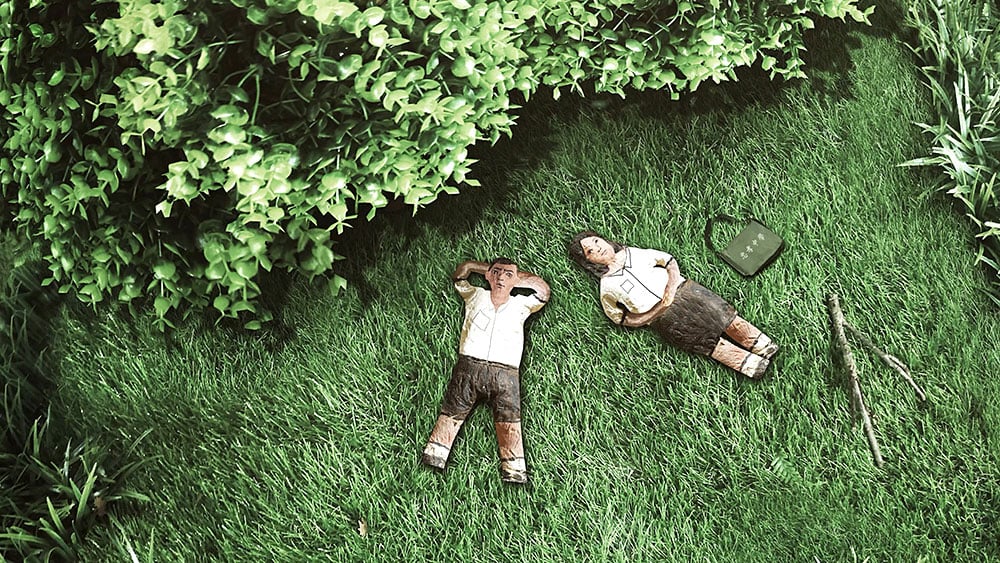
Chang Li-Ren, Battle City 2 – Economic Miracle (2018–2021). Courtesy of Miwa Taguchi.
You run the Taguchi Art Collection with your father, Hiroshi Taguchi. How do your artistic tastes differ from each other?
Interestingly, seeing some Keith Haring prints on the street was an excellent springboard for my father to build his art collection. I would say he likes colorful and two-dimensional works like American Pop art. Thus, the Taguchi Art Collection was mostly about paintings initially, but since I became involved in 2013, three-dimensional, photographic and video works have been placed. As I specialized in social studies at university, I have been very interested in works dealing with social issues, so the number of works with such a background has therefore increased.
Which artists in your collection do you think are important to introduce to a Japanese audience?
I have been buying more works from Latin American, African and Asian contemporary artists, as we would genuinely like to introduce more works from these regions to a Japanese audience. Indeed, we presented works by Zanele Muholi and Teresa Margolles at our collection exhibition earlier this year. I like Brazilian and other South American artists very much and have many in my collection. I feel that Latin American and Japanese art have something in common. I am a member of the International Advisory Board for the São Paulo Biennale, and I am planning an exchange program to bring some curators from Japan to the opening of this year’s Biennale.
What is the most valuable work of art that you own?
All the works are irreplaceable to me, but in terms of price, I would say it is a large painting by Yoshitomo Nara that my father purchased in the 2000s, after being introduced by Tomio Koyama Gallery. At the time, that was still affordable to us. The painting is one of the most popular works in the collection and has often been loaned out to museums despite its quite expensive insurance fee.

William Kentridge, City Deep (2017). Courtesy of Miwa Taguchi.
Where do you buy art most frequently?
Recently, I have been buying works from Jack Shainman Gallery, Goodman Gallery, Massimo de Carlo, Peres Projects, Kukje Gallery, TARO NASU, nichido contemporary art, ANOMALY, NANZUKA. Most of the time we purchase art at galleries; however, we also try as hard as possible to understand work by visiting as many museums shows, art fairs and sometimes art festivals.
Is there a work you regret purchasing?
My advisor gave me some good advice on this: “Good collectors regret not buying, and bad collectors regret buying.” Fortunately, I haven’t had any work that I regret buying thus far. It is very difficult to acquire work at the right time because being able to encounter work you love oftentimes feels like a once-in-a-lifetime opportunity. I always run a lot of research on artists I am interested in, visit as many exhibitions as possible, and take my time in making my choice before purchasing. I would never purchase an artwork from an artist I’m not familiar with just after seeing it once.
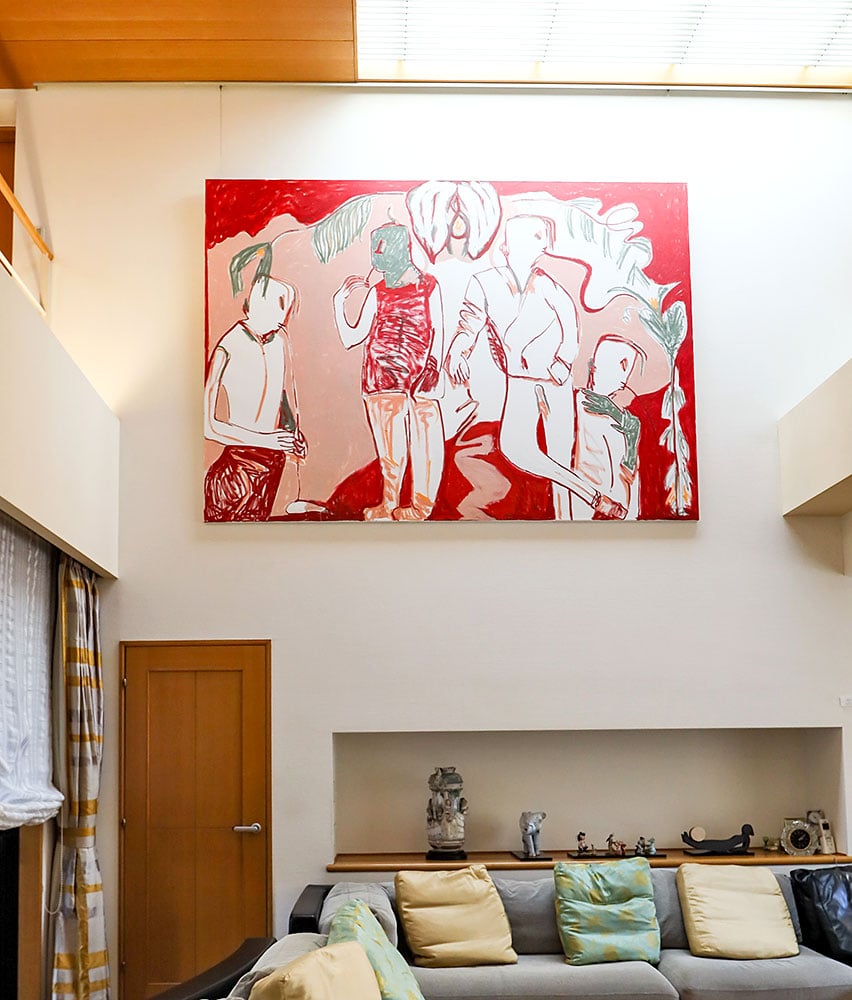
Melike Kara, Backgammon (2016). Courtesy of Miwa Taguchi.
What work do you have hanging above your sofa?
I have a painting by Melike Kara at the moment. I usually switch what to present on the wall almost once a year. I also have a work by Yoko Ono in the alcove of the Japanese-style room.
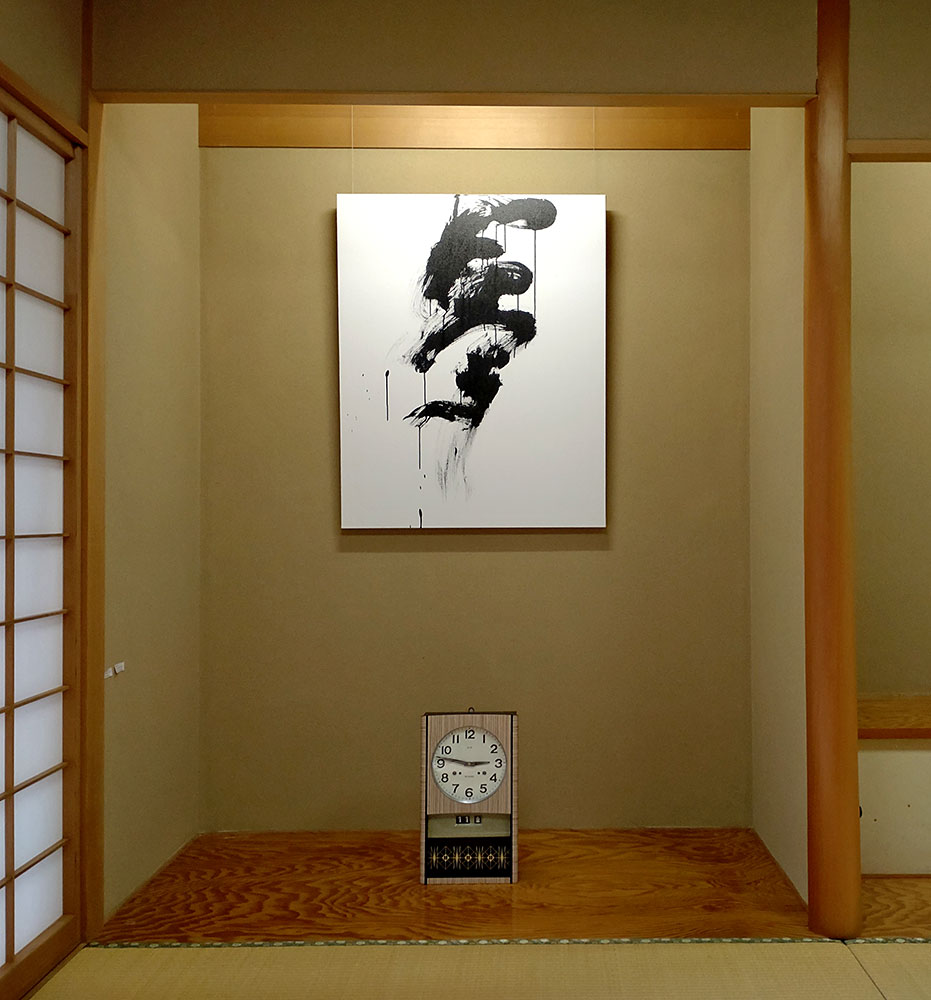
Yoko Ono’s Sky Dust (2011) and, below, Air Clock (2011) in the Japanese-style room of Miwa Taguchi’s home. Courtesy of Miwa Taguchi.
What is the most impractical work of art you own?
I would say a work by Tatzu Nishi, The Real Reasons for Unbreakable Habits and How to Deal With Them (2020). I absolutely adore the work, but it is just too big to present. The fact that these objects, including cars, beds, fridges, and sofas, which were originally practical, are now unusable, but have been carefully preserved as artworks, is in itself surreal and interesting.
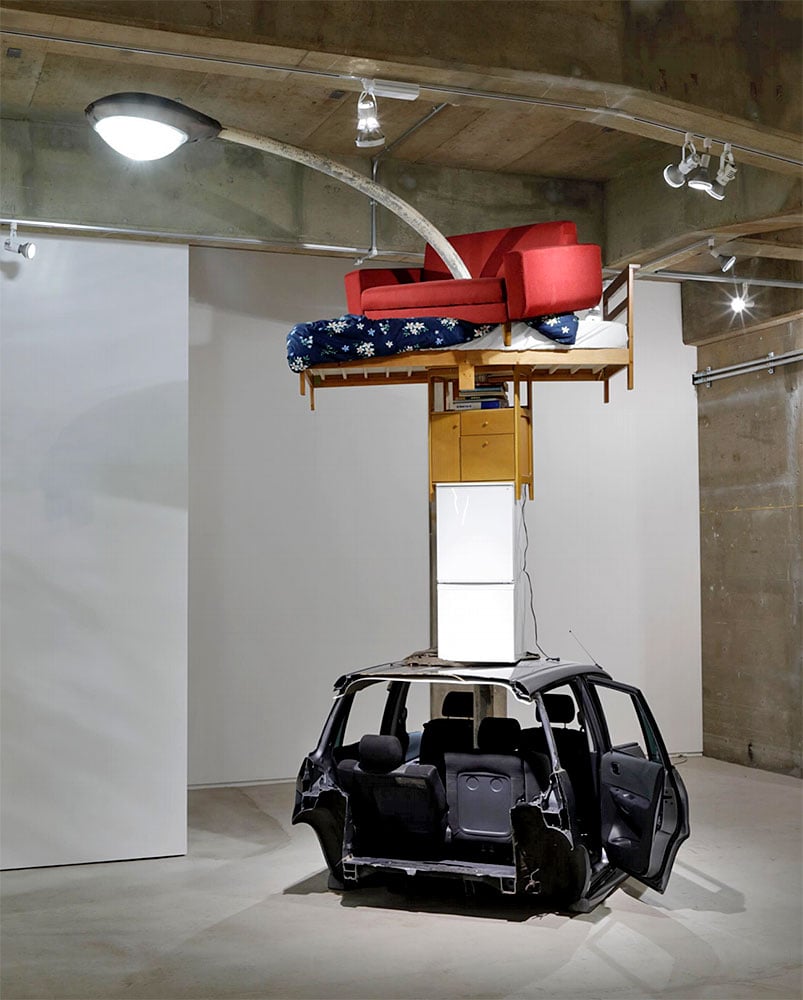
Tatzu Nishi, The Real Reasons for Unbreakable Habits and How to Deal With Them (2020). Courtesy of Miwa Taguchi.
What work do you wish you had bought when you had the chance?
There are many such works. For instance, photographs by Carrie Mae Weems and installation work with lots of windows by Ugo Rondinone.
If you could steal one work of art without getting caught, what would it be?
Definitely a large painting by Cy Twombly that I encountered at the Menil Collection. I could sit in front of the painting forever.